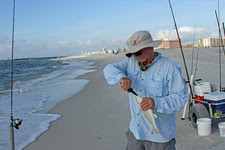Fishing Captiva with a Snook Guru
By Frank Sargeant, Editor
from The Fishing Wire
Captain John Houston is a Sanibel Island, Florida, guide who grew up on the backwaters between San Carlos Bay and Charlotte Harbor, building a guru-like knowledge of the movements and preferences of the snook in his areas, and no matter what the weather, he usually is able to solve the daily puzzle and put his anglers on fish.
I was apprised of that fact on a trip with Houston a few weeks back, on a morning when a chilly wind was whistling out of the north at close to 20 knots. Normally, for snook anglers, the best strategy on a morning like that is to turn over, pull the covers up and sleep until noon.
Houston and I didn’t have that option–he had one morning when he could fit me into his busy winter schedule, and this was it–we were going snooking. We met at the ‘Tween Waters Marina at a leisurely 8 a.m., because the guide had been out since daylight loading the live well with an assortment of pinfish, grunts and pigfish that would allow us to target big snook.
“Young snook will take shrimp about as well as anything, but when they get up in the 30-inch range and bigger, they want some meat,” Houston told me. “I do especially well with the grunts and pigfish. They make a lot of noise on the hook, so they’re snook magnets.”
Houston is an easy-going guy who bounces around the world between sessions of guiding on his home waters. He has a second home in Costa Rica and has hiked the mountains of Columbia, including the drug-lord territory, as well as regularly visiting island communities all over the South Pacific. He’s also a yoga instructor–needless to say, his resume is a bit different from most skiff guides.
Houston advised me that the south shore of Redfish Pass–which is the cut that separates North Captiva island from Captiva Island proper–is usually stiff with undersized snook (less than 28″) along the south shore, while the rock jetties that jut out from the north shore–where the Kohler Plumbing mansion is the most visible structure–is the home of much larger fish much of the year.
“The big ones get in the pass starting in late April pre-spawn, and they’re in there pretty much into early November most years,” he told me. “A lot of them go out to the reefs when it gets colder in December and January, and some go up into the rivers, but other than that you can catch trophy snook in the pass most any trip.”
We made the 10-minute run across the choppy water, dodging spray blown up by the howling wind the whole way. We were in the lee as we moved in close to the jetties, but waves generated by the combination of the wind and the strong current through the pass had Houston’s center-console bucking so hard it was tough to get an anchor to stick.
After a couple of attempts, we were finally in position. I sailed an unhappy 6-inch piggy out toward the end of the rockpile, where the green water of the pass swirled in a foam-capped eddy. The bait went down, the 20-pound-test braid jumped a couple of times, and I was hooked up to what felt like a submarine. One big head roll, mouth the size of a coffee can, and I got the mauled pigfish back sans snook.
Next cast, basically the same result, but even faster. Third cast, a good stick but then Flipper showed up. The dolphin chased the fish around the rockpile at flank speed, and the hook pulled. I couldn’t tell if the fish went down the hatch or got away clean, but in any case it didn’t come to the boat.
“The dolphins here have really learned to home in on fisherman,” lamented Houston. “Some days it’s tough to get a fish to the boat, and if you do get one in and release it, they eat it right away.”
That was the end of the story for the jetty–the next pigfish that went in the water got chased all the way back to the boat by a dolphin that came up right next to us rolled on his back, I swear grinning an evil grin.
No problem, Houston had plenty more spots up the sleeve of his foul-weather gear.
“There are quite a few people who live on the water and dump their live bait and their fish carcasses by their docks, and the snook get on to that pretty quick,” he told me as we motored into a series of canals on the back side of the island. “If you throw a few sardines or shrimp in there as chum to get them started, you can get bit pretty quick.”
He wasn’t wrong–the second dock we tried produced a pair of 28-inchers, both legal fish if we had been in harvesting mode. The limits on the Gulf Coast are 1 fish per angler per day from 28 to 33 inches long.
We caught a few smaller fish at another location, then finished off with a muscular lunker that was over 30 inches. Not bad for a three-hour trip on a 20-knot morning.
Houston said snooking is good in the area year around except after severe cold fronts, but if he had to pick two prime times they would be April and late October, when water temperatures and weather combine to create the most reliable action.
The Gulf Coast snook season is closed December 1 to the end of February to protect cold-shocked fish, and from May 1 to August 31 to protect the spawning period. For more information, Captain John Houston can be contacted at www.nativeguidesfishing.com. Houston also runs tarpon charters, chases trout and reds, and offers shelling and diving trips as well.
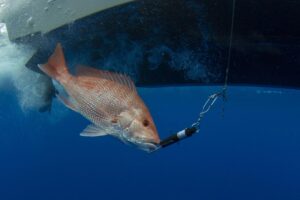
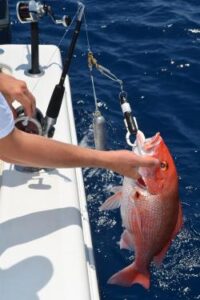
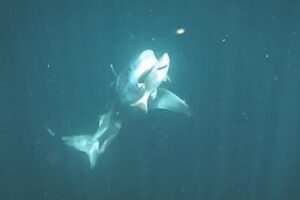
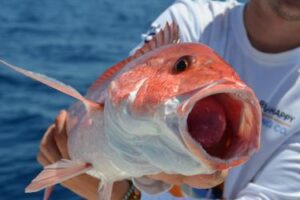
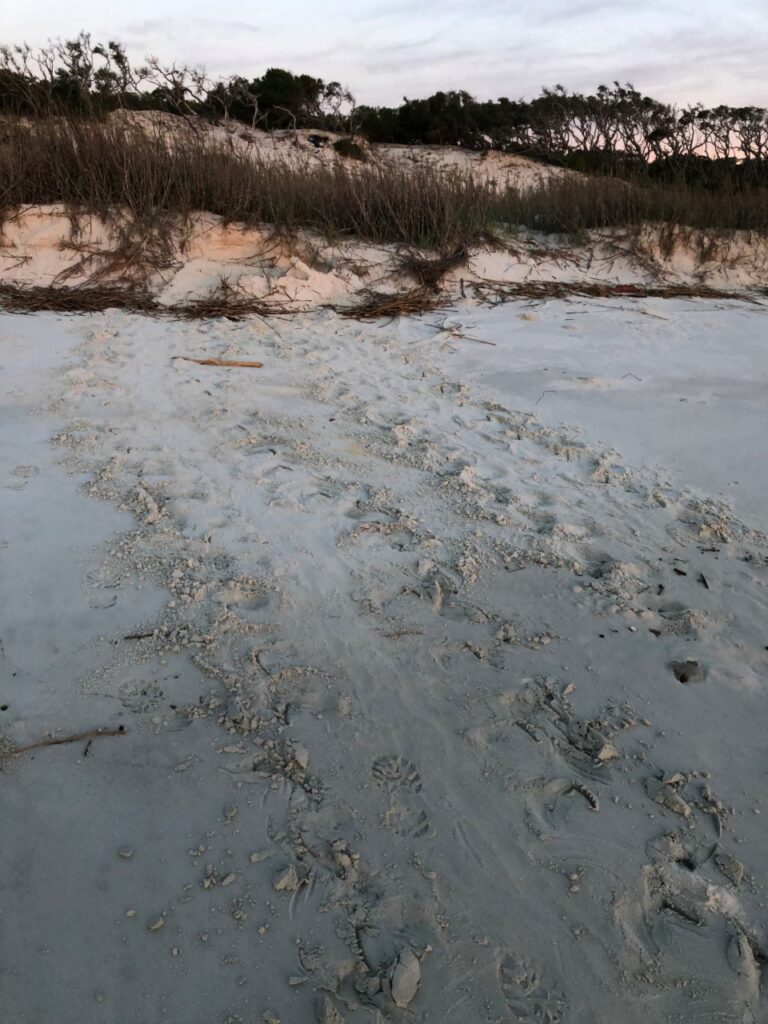
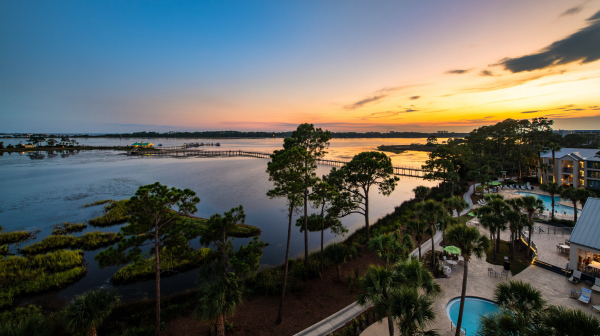 The Sheraton Panama City Beach is a great spot for anglers and boaters, with wadefishing on the premises, boat docks just across the walkway over the lagoon.
The Sheraton Panama City Beach is a great spot for anglers and boaters, with wadefishing on the premises, boat docks just across the walkway over the lagoon.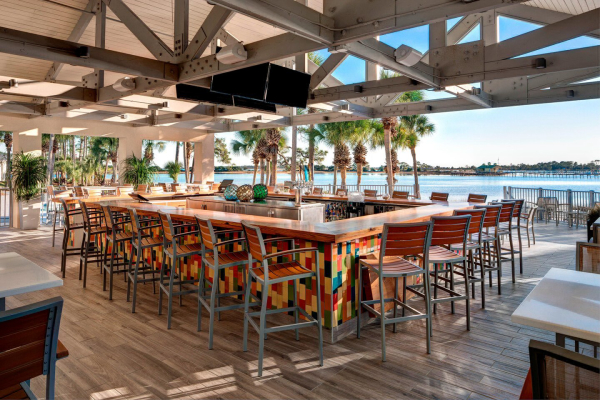 Flip Flop’s Bar and Restaurant in Panama City Beach is close enough to the lagoon to hear the mullet jump.
Flip Flop’s Bar and Restaurant in Panama City Beach is close enough to the lagoon to hear the mullet jump.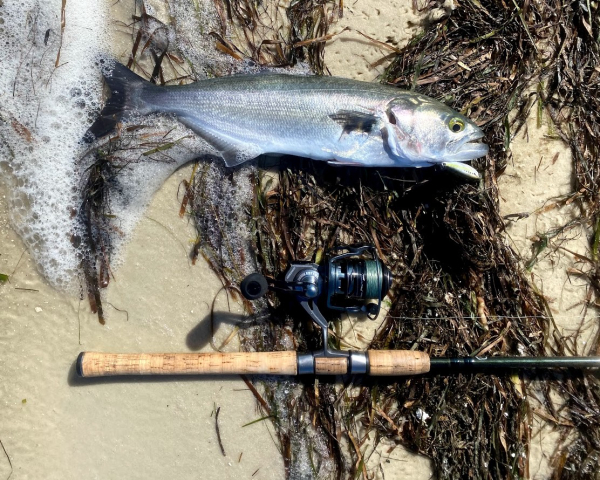 Bluefish are a common catch all along the Gulf Coast so long as the baitfish are still present, which they typically are from April through early November. While wadefishing gets you to lots of fish, it’s also possible to rent kayaks and paddleboards at many locations along the coast, adding considerably to range as well as allowing you to fish deeper water if that’s where the fish are holding.
Bluefish are a common catch all along the Gulf Coast so long as the baitfish are still present, which they typically are from April through early November. While wadefishing gets you to lots of fish, it’s also possible to rent kayaks and paddleboards at many locations along the coast, adding considerably to range as well as allowing you to fish deeper water if that’s where the fish are holding. 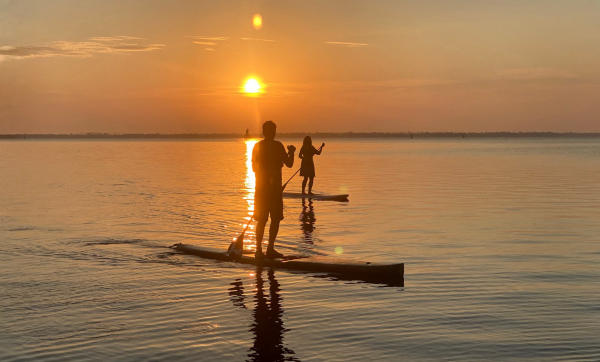 Standup paddleboards float in just inches of water, while allowing access to miles of great flats fishing all along the north Gulf Coast.
Standup paddleboards float in just inches of water, while allowing access to miles of great flats fishing all along the north Gulf Coast.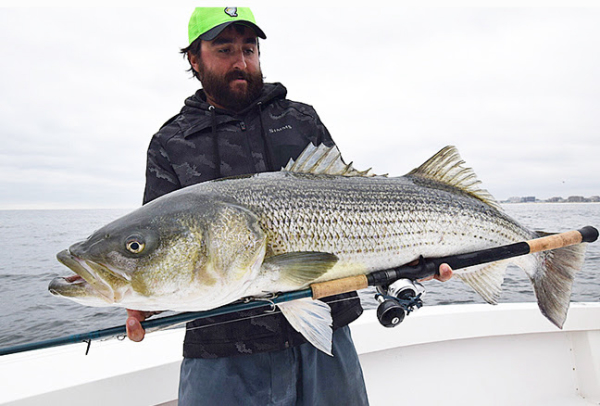 Radlof says the bass are primarily feeding on adult bunker inshore.
Radlof says the bass are primarily feeding on adult bunker inshore. 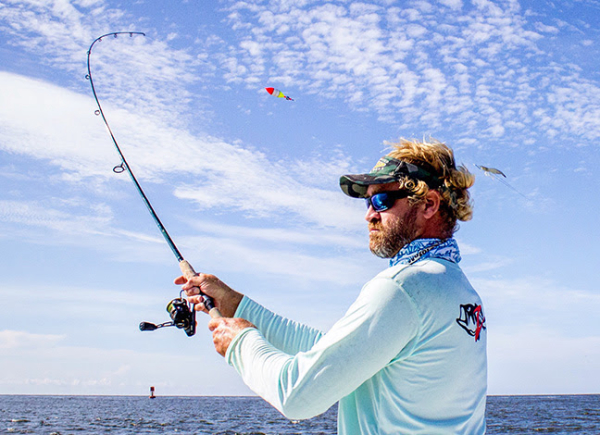 Carter is finding success on bigger trout with topwaters and suspending twitch baits, and well as Z-Man
Carter is finding success on bigger trout with topwaters and suspending twitch baits, and well as Z-Man 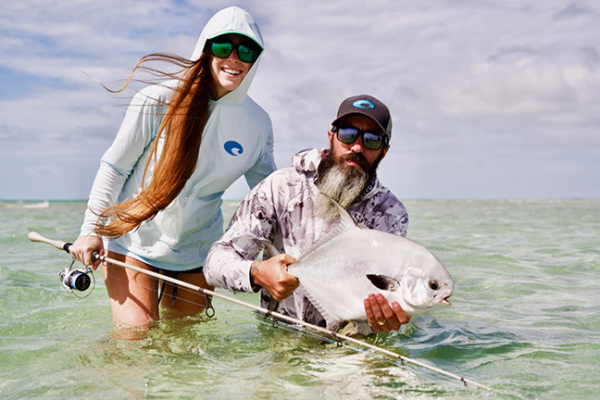 Brown touts sight fishing the flats this time of year when conditions are favorable. “I like to pair a 3000 series spinning reel with a St. Croix 7’, medium-light power, new
Brown touts sight fishing the flats this time of year when conditions are favorable. “I like to pair a 3000 series spinning reel with a St. Croix 7’, medium-light power, new 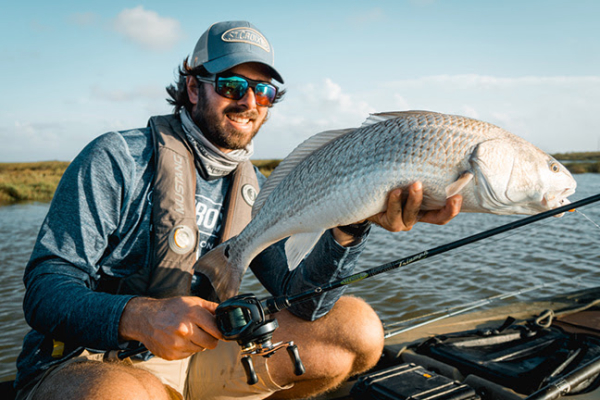 Sanderson drills down on Triumph Inshore’s varied handle options. “I preferred the 7’ version a bit better with the longer, full cork handle because I prefer to cast with two hands, but found the shorter-handled 6’8” split-grip an ideal option for wading. It’s rare to find a casting rod that performs with the lightweight jigs and baits I use so much of the time, and both of these rods excelled.”Sanderson and Gonzalez were impressed with the new Triumph Inshore rods from the start. “When I unpackaged these rods, the first thing I noticed was the surprisingly high quality of the cork and their beautiful finish,” Sanderson says.
Sanderson drills down on Triumph Inshore’s varied handle options. “I preferred the 7’ version a bit better with the longer, full cork handle because I prefer to cast with two hands, but found the shorter-handled 6’8” split-grip an ideal option for wading. It’s rare to find a casting rod that performs with the lightweight jigs and baits I use so much of the time, and both of these rods excelled.”Sanderson and Gonzalez were impressed with the new Triumph Inshore rods from the start. “When I unpackaged these rods, the first thing I noticed was the surprisingly high quality of the cork and their beautiful finish,” Sanderson says. 